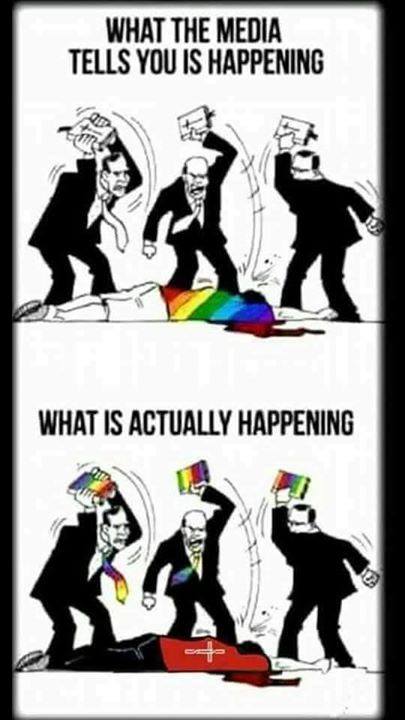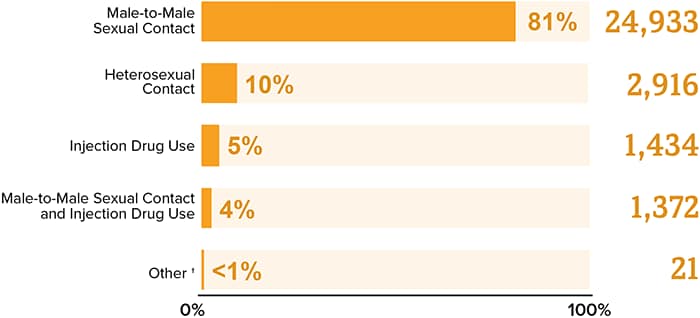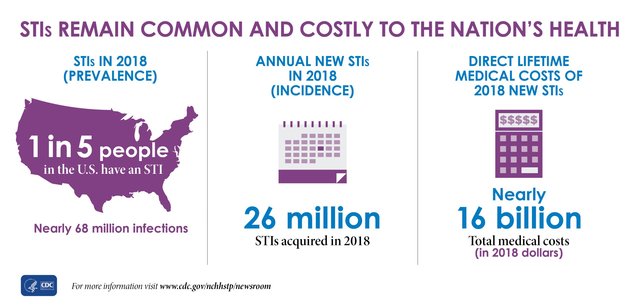







>> the RAND Corporation
yeah, there’s an operation that has our best interests in mind /s
What a load BS by yet another hijacked publication.








Two penises do not a marriage make.
Two vaginas do not a marriage make.
Never have; never will.
All that is accomplished is science and reality are mocked.
And that’s a loser any way you want to look at it.
The pathologies of doing the San Fran Boogie are well known. They aren’t going to go away just because it’s more accepted today.
Thread Article is a Huge Steaming Pile of Bullshit.
The fact is that homosexuality among males is really bad for their health.
**********************************************
https://resources.cmda.org/article/negative-health-consequences-of-same-sex-sexual-behavior/
************************************************
Negative Health Consequences of Same-Sex Sexual Behavior
The health effects of same-sex sexual behavior are many. The public, government, and judiciary are being lead to believe that same-sex sexuality is a normal variant with interactions and results equivalent to heterosexual sexuality. However, this position runs contrary to professional literature and the track record of history.
Homosexuality | Same-Sex Marriage | Sexual Orientation
Andrè Van Mol, MD
The health effects of same-sex sexual behavior are many. The public, government, and judiciary are being lead to believe that same-sex sexuality is a normal variant with interactions and results equivalent to heterosexual sexuality. However, this position runs contrary to professional literature and the track record of history.
By any repeatable measure, the percentage of the population identifying as gay, lesbian, bisexual, or transgender (GLBT) is small. The United States Center for Disease Control and Prevention (CDC) estimates that men having sex with men (MSM) comprise approximately two percent of the population, or four percent of the U.S male population.1 The University of Chicago’s National Opinion Research Center has conducted surveys regarding homosexuality since the late 1980s and deems that approximately two percent of the U.S. population identifies as either gay, lesbian, or bisexual.2 The 2006-2008 National Survey of Family Growth conducted by the CDC’s National Center for Health Statistics found that among women ages 18 to 44, 3.5 percent identified as bisexual with 1.4 percent identifying as homosexual, gay, or lesbian. Among men of the same age group, 1.7 percent claimed gay identity with 1.1 percent identifying as bisexual.3
The question of the ultimate origin of sexual orientation is not yet definitively answered, but there is very little evidence that anyone is inherently of alternative sexual orientation.
A 1993 scientific literature critique by Byne and Parsons in Archives of General Psychiatry reviewed the major studies on the subject and found no evidence favoring sexual orientation being either genetically or biologically determined.4
Researchers Friedman and Downey of Columbia University School of Medicine remarked, “At clinical conferences one often hears . . . that homosexuality is fixed and unmodifiable. Neither assertion is true. . . . The assertion that homosexuality is genetic is so reductionist that it must be dismissed out of hand as a general principle of psychology.”5
Dr. Francis S. Collins, current Director of the U.S. National Institutes of Health and former director of the National Human Genome Research Institute, asserted that homosexuality “is genetically influenced but not hardwired by DNA” and that “whatever genes are involved represent predispositions, not predeterminations . . .” 6 Predisposition is not destiny.
The 2008 American Psychological Association’s brochure Sexual Orientation & Homosexuality: Answers to Your Questions For a Better Understanding states, “There is no consensus among scientists about the exact reasons that an individual develops a heterosexual, bisexual, gay, or lesbian orientation. Although much research has examined the possible genetic, hormonal, developmental, social, and cultural influences on sexual orientation, no findings have emerged that permit scientists to conclude that sexual orientation is determined by any particular factor or factors. Many think that nature and nurture both play complex roles; most people experience little or no sense of choice about their sexual orientation.”7
GLBT-oriented men and women may not choose their attractions, but, short of force, they do choose their sex partners. From a national health perspective, the issue is not the origins of homosexual or GLBT orientation, but the consequences of engaging in such sexual activity.
The negative health consequences of alternative sexuality are made more understandable by first recognizing the nature of the sexual practices at issue. A 1979 survey in the book The Gay Report revealed the percentage of gay men who engaged in the following practices: 99% oral sex, 91% anal sex, 82% rimming (analingus), 22% fisting, 23% golden showers (urination on another), 4% scat (defecation on another). 8 The book’s two authors were of same-sex sexual attraction. A May 2011 medical journal article found that felching (“sucking or eating semen out of someone’s anus”) was a sought-after practice in one-sixth of men’s profiles in “one of the largest Internet websites specifically targeting MSM looking for partners for unprotected sex.”9
The Gay Lesbian Medical Association (GLMA) web site describes the following detrimental effects associated with same-sex sexual practice: higher rates of HIV/AIDS, substance abuse, depression/anxiety, hepatitis, sexually transmitted illnesses (anal papilloma/HPV, gonorrhea, syphilis, and chlamydia), certain cancers, alcohol abuse, tobacco use, eating disorders, and (in subsets) obesity.10
In February 2009 a Canadian GLBT group filed a human rights complaint against the Canadian government and Health Canada asserting that the Canadian GLBT population had poor statistics for life expectancy (twenty years short of standard), suicide, alcohol and illicit drug/substance abuse, cancer, infectious disease, HIV/AIDS, and depression. This is noteworthy in that it challenges the assertion of those claiming the negative health statistics attributed to individuals of GLBT orientation are merely a function of the lack of acceptance of such individuals, and that said statistics would improve with their increased acceptance. Canada provides a highly supportive government, celebration from liberal churches, and a public coerced into silence by hate speech codes, yet the poor health indicators for the GLBT populace remains. This demonstrates that acceptance and affirmation of same-sex sexuality is not the promised antidote for the problems inherent in GLBT sexuality.
To reiterate, The Gay Report, the Gay Lesbian Medical Association, and the Canadian GLBT coalition’s human rights complaint are sources from within the GLBT population.
REDUCED LIFE EXPECTANCY
Dr. J. Satinover documents that homosexuals lose twenty-five to thirty years of their lifespan. Gonorrhea, chlamydia, syphilis, herpes, HIV/AIDS, other sexually transmitted infections, enteric infections and disease, cancers, alcoholism, suicide, and numerous other causes are listed. 11
A 1997 Canadian study published in the International Journal of Epidemiology noted that in urban gay areas, homosexual men had a life expectancy comparable to that in Canada in the 1870s. The researchers concluded, “In a major Canadian centre, life expectancy at age 20 years for gay and bisexual men is 8 to 20 years less than for all men.”12
SEXUALLY TRANSMITTED INFECTIONS/DISEASES (STIs or STDs)
Data presented at the U.S. Center for Disease Control and Prevention’s 2010 National STD Prevention Conference showed the rate of new HIV diagnoses among men who have sex with men (MSM) was over 44 times that of other men and more than 40 times that of women. The rate of primary and secondary syphilis among MSM was over 46 times that of other men and more than 71 times that of women.13
Furthermore, a study discussed at the International AIDS conference in 2000 documented that sixteen percent of HIV-positive gay men in a nationwide sampling in the United States admitted to at least one incidence of unprotected intercourse with an unaware partner.14
The CDC also warns on their Viral Hepatitis Scientific Information – Populations at Risk web page, “Men who have sex with men (MSM) are at elevated risk for certain sexually transmitted diseases (STDs), including Hepatitis A, Hepatitis B, HIV/AIDS, syphilis, gonorrhea, and Chlamydia . . . Approximately 15%-25% of all new Hepatitis B virus (HBV) infections in the United States are among MSM.”15
The CDC’s Division of HIV/AIDS Prevention reported in April 2011 that, “The sexual health of gay, bisexual, and other men who have sex with men (MSM) in the United States is not getting better despite considerable social, political and human rights advances. Instead of improving, HIV and sexually transmitted infections (STIs) remain disproportionately high among MSM and have been increasing for almost two decades.”16
A study in a 1999 edition of the American Journal of Public Health found that bisexual women were more likely than heterosexual women “to report drug use in the 3 months before the study, a greater lifetime number of male partners, a sex partner who had had sex with a prostitute, an earlier age at sexual debut, and forced sexual contact,” and concluded, “Health workers should be aware of bisexual experience among women, since this may be a marker for multiple risk behaviors for HIV/STDs.”17
A 2000 study in the journal Sexually Transmitted Infections asserted that women who have sex with women (WSW) had higher rates of bacterial vaginosis, hepatitis C, and HIV risk behaviors (specified as “more likely to report previous sexual contact with a homo/bisexual man . . . or with an injecting drug user . . .”) than the heterosexual control group.18
These sources demonstrate that GLBT individuals not only have higher positivity rates of STIs and HIV, but do not always inform their sexual partners of the presence of such, and that some of their sexual partners could still be of the opposite sex despite a self-identification as same-sex attracted. STIs among GLBT persons are not exclusively a GLBT problem, but can affect the population at large.
CANCER
A 2011 study published in the journal Cancer found gay men demonstrating 1.9 times the odds of reporting a cancer than heterosexual men, while “. . .lesbian and bisexual female cancer survivors had 2.0 and 2.3× the odds of reporting fair or poor health compared with heterosexual female cancer survivors.” 19 In a related interview, lead researcher Dr. Boehmer specified that said cancers were both AIDSassociated and non-AIDS defining. Examples of the latter were given as, “anal, lung, testicular cancer, and Hodgkin’s lymphoma.”20
The American Cancer Society’s web page Cancer Facts for Gay and Bisexual Men specifies that gay men are at increased risk for lung, testicular, colon, and anal cancers.21 Their web page Cancer Facts for Lesbians and Bisexual Women indicates this population finds an increased risk of breast, lung, colon, ovarian, and endometrial cancers.22 For both the groups listed, the risk factors are described as stemming in part from higher rates of tobacco use, alcohol use, and being overweight. For breast and gynecologic malignancies, the Cancer Facts for Lesbians and Bisexual Women page clarifies, “Women who have not had children and have not breast-fed, have not used oral contraceptives, and are older when they first give birth – all factors more likely to affect lesbians and bisexual women – are also at a slightly higher risk.”
The Gay & Lesbian Medical Association (GLMA) web site features the page Ten Things Lesbians Should discuss with Their Healthcare Provider, which states the following: “Lesbians have the richest concentration of risk factors for breast cancer than any subset of women in the world.” And “Lesbians have higher risks for many of the gynecologic cancers.”23
The GLMA’s web page Ten Things Gay Men Should Discuss with Their Healthcare Provider warns, “Gay men may be at risk for death by prostate, testicular, or colon cancer.” It also notes, “. . . the increased rates of anal cancers in gay men.”24
MENTAL HEALTH
The Netherlands Mental Health Survey and Incidence Study (NEMESIS) asserted, “people with same-sex sexual behavior are at greater risk for psychiatric disorders.” Mood disorders, anxiety, having more than one psychiatric diagnosis, and substance use disorders were specified. 25
A 1999 New Zealand Study found that gay, lesbian, and bisexual young people were at increased risk for suicidal behavior and ideation, major depression, generalized anxiety disorder, conduct disorder, tobacco dependence, and multiple disorders compared to the heterosexual subsample.26 The study also reported a prevalence rate of two percent for homosexuality/bisexuality, 2.8 percent if counting any same-sex encounter after sixteen years of age.
A 1999 co-twin control study in adult men, “Sexual Orientation and Suicidality,” showed same-sex sexual orientation was significantly associated with four measures of suicidality (thoughts about death, wanting to die, thoughts of suicide, and attempt). After adjustment for substance abuse and depressive symptoms, three of four measures (except “wanting to die”) remained higher in same-sex attracted people than heterosexuals.27
A 2001 study came to similar conclusions: “Homosexual orientation, defined as having same-sex sexual partners, is associated with a general elevation of risk for anxiety, mood, and substance use disorders and for suicidal thoughts and plans.”28
DOMESTIC VIOLENCE
Domestic violence is higher in same-sex relationships. In 2004, with a 50,000 U.S. dollar grant from the Blue Shield of California Foundation, the Gay and Lesbian Medical Association launched the “LGBT Relationship Violence Project” to educate medical professionals about the high rate of domestic violence in those communities. “The Blue Shield of California Foundation recognizes that little attention has been paid to domestic violence in LGBT contexts…” said Marianne Balin, manager of the Blue Shield of California Foundation’s anti-violence program. 29
In 1993 a Boston program for gay-bashing victims noted that half the calls they received regarded domestic violence. Same-sex-couple domestic violence is called “the second closet,” and has been a taboo subject for conversation. “In a sexual minority, there’s always resistance to airing dirty laundry,” reported Terry Person, director of San Francisco’s Community United Against Violence. 30
One might assume said violence is mainly a male-on-male phenomenon, but the literature refutes this. The Journal of Social Service Research in 1991 published a survey of more than 1,100 lesbians with over half reporting, “they had been abused by a female lover/partner. The most frequently indicated forms of abuse were verbal/emotional/ psychological abuse and combined physical-psychological abuse.”31
A 1994 study in the Journal of Consulting and Clinical Psychology reported that 37% of lesbians had been physically abused as adults or children, and 32% were either raped or sexually battered. 32
YOUTH AT RISK The CDC reported on June 6, 2011 the findings of the 2001-2009 Youth Risk Behavior Surveys, which revealed, “gay or lesbian students had higher rates for seven of the 10 health risk categories (behaviors that contribute to violence, behaviors related to attempted suicide, tobacco use, alcohol use, other drug use, sexual behaviors, and weight management).”33
In conclusion, we see a substantial body of scientific literature repeatedly confirming that same-sex sexual behavior carriers with it increased rates of HIV/AIDS, substance abuse, alcohol abuse, tobacco use, depression, anxiety, eating disorders, suicidality, obesity, hepatitis of various forms, numerous sexually transmitted infections, various cancers, and domestic violence, with substantially shorter life expectancy. The infectious disease problems cross over to the heterosexual population through multiple avenues addressed in the sexually transmitted infections section of this testimony.
Though people generally do not choose their sexual orientation, they do choose the people with whom they have intercourse, save for cases of coercion or violence. One’s sexual orientation will not protect one from the consequences of same-sex sexual behavior, and those consequences can and do affect the population at large. Increased societal acceptance of same-sex sexuality has not thus far proved helpful in reducing the negative health consequences of those sexual practices.
Those who challenge the normalcy and equivalence arguments of GLBT advocates are predictably met with the jamming tactic of being labeled bigots, haters, and homophobes so as to pre-empt reasonable debate. Disagreeing with GLBT sexual practice is neither hatred, harassment, phobia, nor violence, but the expression of opinion firmly grounded in medical literature.
Behavioral consequences exist and the results are not the same for all sexual behaviors. Technology cannot correct this and blame shifting the negative results of same-sex sexual practice is misguided. Encouragement, let alone celebration, of same-sex sexuality is not a benign mistake, as the record of the health statistics of those practicing GLBT sexuality demonstrates.
SOURCES:
1 Center for Disease Control and Prevention press release: “CDC Analysis Provides New Look at Disproportionate Impact of HIV and Syphilis Among U.S. Gay and Bisexual Men,” 2010. http://www.cdc.gov/nchhstp/newsroom/msmpressrelease.html.
2 Smith, T. American Sexual Behavior: Trends, Socio-Demographic Differences, and Risk Behavior. National Opinion Research Center, University of Chicago. 2006. http://www.norc.org/NR/rdonlyres/2663F09F-2E74-436E-AC81- 6FFBF288E183/0/AmericanSexualBehavior2006.pdf (pp. 57).
3 Chandra A, et al. Sexual behavior, sexual attraction, and sexual identity in the United States: Data from the 2006-2008 National Survey of Family Growth. National health statistics reports; no 36. Hyattsville, MD: National Center for Health Statistics. 2011. (pp. 29, 30).
4 Byne, W. & Parsons, B. (1993), “Human sexual orientation: the biologic theories reappraised.” Archives of General Psychiatry, 50, p. 229-239.
5 Friedman, R.C. and Downey, J.I., 2002, Sexual Orientation and Pscyhoanalysis: Sexual Science and Clinical Practice, New York: Columbia University Press, p. 39.
6 Collins, F. S. (2006). The language of god, a scientist presents evidence for belief. (New York: Free Press) p. 257-263.
7 http://www.apa.org/topics/sexuality/orientation.aspx.
8 Jay, K., Young, A., The Gay Report (New York: Summit Books, 1979)
9 Klein, H. “Felching Among Men Who Engage in Barebacking (Unprotected Anal Sex).” Arch Sex Behav. 2011 May 14. [Epub ahead of print].
10 http://glma.org/index.cfm?fuseaction=Page.viewPage&pageID=690 and http://www.glma.org/index.cfm?fuseaction=Page.viewPage&pageID=691.
11 Satinover, J. Homosexuality and the Politics of Truth. (Baker, 1998) pp. 51, 68-69.
12 Hogg, Robert S. et al. “Modeling the Impact of HIV Disease on Mortality in Gay and Bisexual Men.” International Journal of Epidemiology. 26. 1997. 657.
13 Center for Disease Control and Prevention press release: “CDC Analysis Provides New Look at Disproportionate Impact of HIV and Syphilis Among U.S. Gay and Bisexual Men,” http://www.cdc.gov/nchhstp/newsroom/msmpressrelease.html.
14 Torassa, U. Some with HIV aren’t disclosing before sex: UCSF researcher’s 1,397- person study presented during AIDS conference. San Francisco Examiner. July 15, 2000.
15 http://www.cdc.gov/hepatitis/Populations/msm.htm.
16 Wolitski, RJ, et al. “Sexual health, HIV, and sexually transmitted infections among gay, bisexual, and other men who have sex with men in the United States.” AIDS Behav. 2011 Apr;15 Suppl 1:S9-17.
17 Gonzales, V, et al. Sexual and drug-use risk factors for HIV and STDs: a comparison of women with and without bisexual experiences. American Journal of Public Health, Vol. 89, Issue 12 1841-1846 (1999).
18 Feathers, K, et al. Sexually transmitted infections and risk behaviours in women who have sex with women. Sex Transm Infect. 2000;76:345-349.
19 Boehmer, U., et al., “Cancer survivorship and sexual orientation”, Cancer, article first published online: 9 MAY 2011 (DOI: 10.1002/cncr.25950).
20 “Cancer Rates, Poor Health Higher for Gay Community,” BU Today, May 10, 2011, http://www.bu.edu/today/node/12896.
21 http://www.cancer.org/Healthy/FindCancerEarly/MensHealth/cancer-facts-forgay-and-bisexual-men.
23 http://www.glma.org/index.cfm?fuseaction=Page.viewPage&pageID=691.
24 http://www.glma.org/index.cfm?fuseaction=Page.viewPage&pageID=690.
25 Sandfort, et al., “Same-Sex Sexual Behavior and Psychiatric Disorders,” Arch Gen Psychiatry. 2001; 58:85-91.
26 Fergusson, et al., “Is Sexual Orientation Related to Mental Health Problems and Suicidality in Young People?” Arch Gen Psychiatry. 1999; 56:876-880.
27 Herrell, et al., “Sexual Orientation and Suicidality: A Co-twin Control Study in Adult Men,” Arch Gen Psychiatry. 1999;56:867-874.
28 Vickie M. Mays, et al., “Risk of Psychiatric Disorders among Individuals Reporting Same-sex Sexual Partners in the National Comorbidity Survey,” American Journal of Public Health, vol. 91 (June 2001): 933-939.
29 Jones, S.,”Domestic Violence in LGBT Relationships Targeted,” October 20, 2004, CNSNews.com.
30 Patricia King, “Not So Different, After All,” Newsweek, Oct. 4, 1993.
31 Lie, Gwat Yon, et al. “Intimate Violence in Lesbian Relationships: Discussion of Survey Findings and Practice Implications.” Journal of Social Service Research. 15. 1991. 41-59.
32 Bradford, J. et al. “National Lesbian Health Care Survey: Implications for Mental Health Care.” Journal of Consulting and Clinical Psychology. 1994. 239.
33 CDC press release, “CDC Report Finds Gay, Lesbian and Bisexual Students At Greater Risk for Unhealthy, Unsafe Behaviors,” June 6, 2011. http://www.cdc.gov/media/releases/2011/p0606_yrbsurvey.html.
***********************************************
Less than 1% of all U.S. adults are in a same-sex marriage LGBT Americans Married to Same-Sex Spouse Steady at 10%Meanwhile,

Related to this is that,
The risk of becoming infected with HIV during condomless anal sex is 10 to 20 times greater than condomless vaginal sex. Because the rectal lining is only one-cell thick, the virus can more easily reach immune cells to infect. (https://www.mtnstopshiv.org/news/rectal-microbicides-fact-sheet)
Also reported, "People living with HIV in Canada had eight times the risk of Alzheimer’s disease and other non-AIDS-related dementia as their HIV-negative counterparts, and they were diagnosed 12.5 years earlier [which in part may be due to more medical attention], according to an analysis published in BMJ Open.
They also had higher rates of several other age-related chronic conditions....Antiretroviral treatment has been associated with kidney damage and cardiovascular disease, and viral hepatitis and alcohol use—both common among HIV-positive people—can cause liver disease." (https://www.poz.com/article/people-hiv-diagnosed-dementia-13-years-earlier)

More: negative-effects-of-homosexual.html


Author, at left.